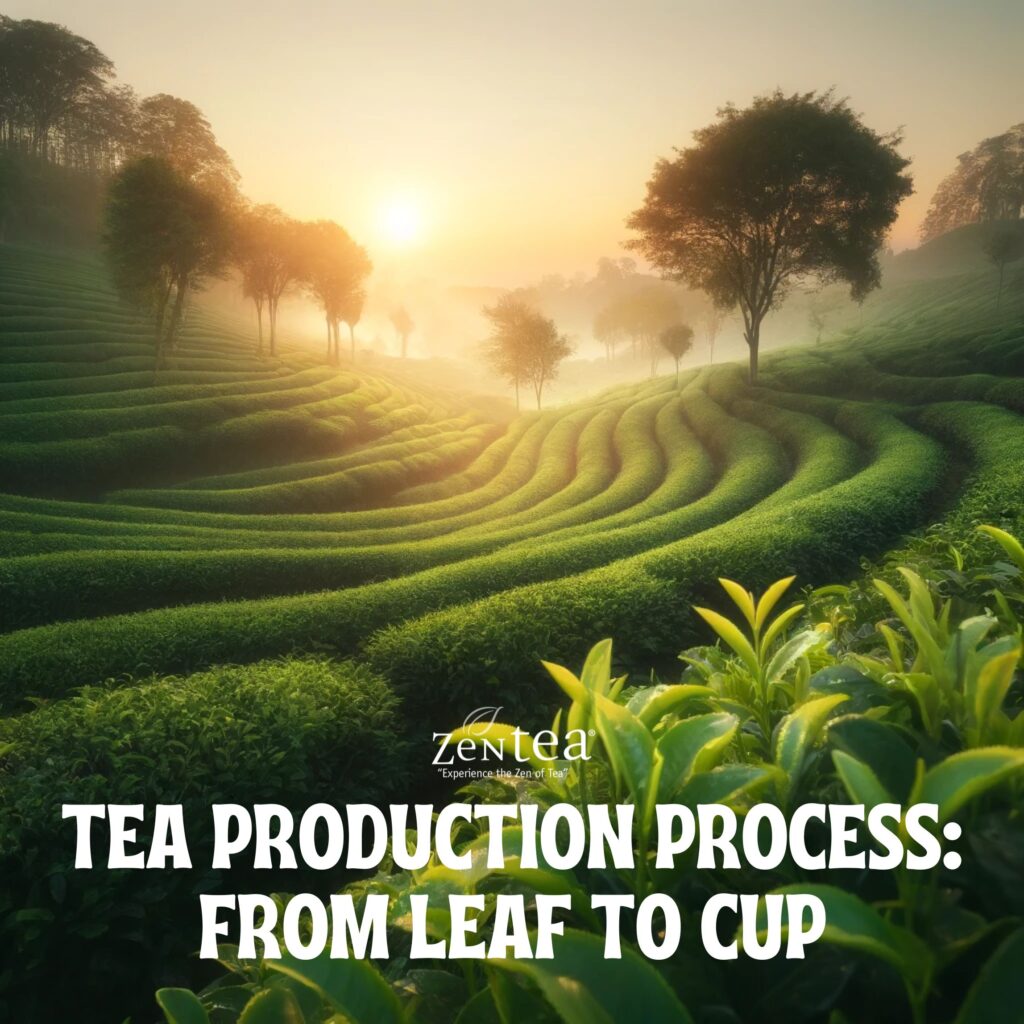Tea Production Process: From Leaf to Cup – ZenTeaCo
From Leaf to Cup: The Tea Production Process Unveiled
Tea, one of the world’s oldest beverages, undergoes a remarkable transformation from leaf to cup. At ZenTea in Chamblee, GA, we are passionate about providing our customers with not only premium teas but also an understanding of how these teas are crafted. This blog post will take you through the detailed steps of the tea production process, highlighting how each stage shapes the flavor and quality of the tea. Discover our variety of teas at ZenTeaCo.com, where we celebrate the art and science of tea making.

Cultivation and Harvesting
The journey of tea begins in the lush fields where it is cultivated. The location, climate, and soil significantly affect the quality and taste of the tea leaves. Tea plants typically require a warm and humid climate to flourish. Harvesting, the first critical step, involves plucking the top young leaves and buds. The timing of this process is crucial, as it needs to capture the leaves at their aromatic peak.
Related posts
“Mastering the Art of Brewing the Perfect Cup of Tea”
Brewing Perfection: Discover the Art of Tea at ZenTea in Chamblee, GA In the heart of Chamblee, GA,
Tea and Mental Clarity: Unleashing Focus and Productivity with ZenTea
Unlock Mental Clarity with ZenTea: Boost Focus and Productivity Naturally In the fast-paced world we
Green Tea: A Deep Dive into Its Health Benefits
Green Tea Benefits: Unlocking Wellness Secrets – ZenTeaCo.com In our quest for health and vita
Herbal Teas: Unveiling the Mystique of Their Historical Origins
Herbal Teas: Tracing the Roots of an Ancient Tradition The story of herbal teas is as rich and varie
